PMC/PubMed Indexed Articles
Indexed In
- Online Access to Research in the Environment (OARE)
- Open J Gate
- Genamics JournalSeek
- JournalTOCs
- Scimago
- Ulrich's Periodicals Directory
- Access to Global Online Research in Agriculture (AGORA)
- Electronic Journals Library
- Centre for Agriculture and Biosciences International (CABI)
- RefSeek
- Directory of Research Journal Indexing (DRJI)
- Hamdard University
- EBSCO A-Z
- OCLC- WorldCat
- Scholarsteer
- SWB online catalog
- Virtual Library of Biology (vifabio)
- Publons
- MIAR
- University Grants Commission
- Euro Pub
- Google Scholar
Useful Links
Share This Page
Journal Flyer

Open Access Journals
- Agri and Aquaculture
- Biochemistry
- Bioinformatics & Systems Biology
- Business & Management
- Chemistry
- Clinical Sciences
- Engineering
- Food & Nutrition
- General Science
- Genetics & Molecular Biology
- Immunology & Microbiology
- Medical Sciences
- Neuroscience & Psychology
- Nursing & Health Care
- Pharmaceutical Sciences
Research Article - (2021) Volume 12, Issue 8
Design Characteristics and Specifications of Gill Net Operated Along the Lower Stretches of Vembanad Wetlands, Kerala, India
Ajay VS1* and Amrutha Krishnan R22School of Industrial Fisheries, Cochin University of Science and Technology, Kerala, India
Received: 03-Jul-2021 Published: 24-Aug-2021, DOI: 10.35248/2155-9546.21.12.649
Abstract
Gill net (Locally called odakku vala) design variation, operational techniques, catch composition and selectivity analysis in Vembanad wetland, Kerala was examined between January 2020 to June 2021. Netting materials used for gill net construction in Vembanad Lake were monofilament, multifilament Nylon (polyamide). The Gill net length was 25-55 m with a hung depth of 2-3 m. Gill net was highly species specific and showed selectivity for shallow water species. Its durability ranged from 3.5 months to 2 years depending on the netting material and the environmental conditions where it is being operated. Gill net fishery is one of the main types of artisanal fishery practiced occupationally by the fishermen community of Kerala. The region so far is untouched with the introduction of mechanized fishing apart from small traditionalized improvements. The Gill net was used to catch the fishes of marketable size, small fingerlings which were either used as bait or dried. Instead of using lead or aluminium needles as sinkers many of them were used to carry normal electric wire without copper string inside which reduce their cost of purchase.
Keywords
Gill net; Vembanad lake; Design variation; Catch composition; Selectivity; Seasonal variation
Introduction
Vembanad is one of the largest tropical wetland systems which is spread over 2,033 Km2, is bordered by the Alappuzha, Kottayam and Ernakulam districts of Kerala [1]. It is the second largest brackish water arrangement of South India having a catchment space of 14500 Km2. The area is profoundly broadened by the estuaries, tidal ponds, swamps, mangroves and a portion of the other manmade assets [2]. The geographical location of the wetland is ascertained by its (latitude 9.51°N–10.19°N and longitude 76.16°E–76.43°E) (Figure 1). The Lake was additionally assigned as a wetland of international significance under the Ramsar Convention in 2002 (GOI 2008) and a critically vulnerable coastal region subsequent to perceiving it's environmental significance as an indispensable ecosystem service provider and an essential habitat to diversified range of flouras and faunas[1,2]. The lake opens to the Arabian Sea (max. depth : 4652 m ) in two locations, one at Azhikode (11.9171°N, 75.3354°E) which is at least 100 m wide and fairly deep, and the other at Cochin( 9.9312°N, 76.2673°E) which is 450 m wide [1,2]. The lake has been divided into two zones viz. a freshwater dominant southern zone and a salt water dominant northern zone by the construction of a manmade barrier called Thanneermukkom barrage. The lake support wide range of fresh, saline and marine water species which contain 150 fish species having a place with 100 genera and 56 families [1,2]. The region is noted for two fishery resources [1,2], specifically black clam (Villorita cyprinoides Gray 1825) and Pearl spot [Etroplus suratensis (Bloch 1790)] [2,3].
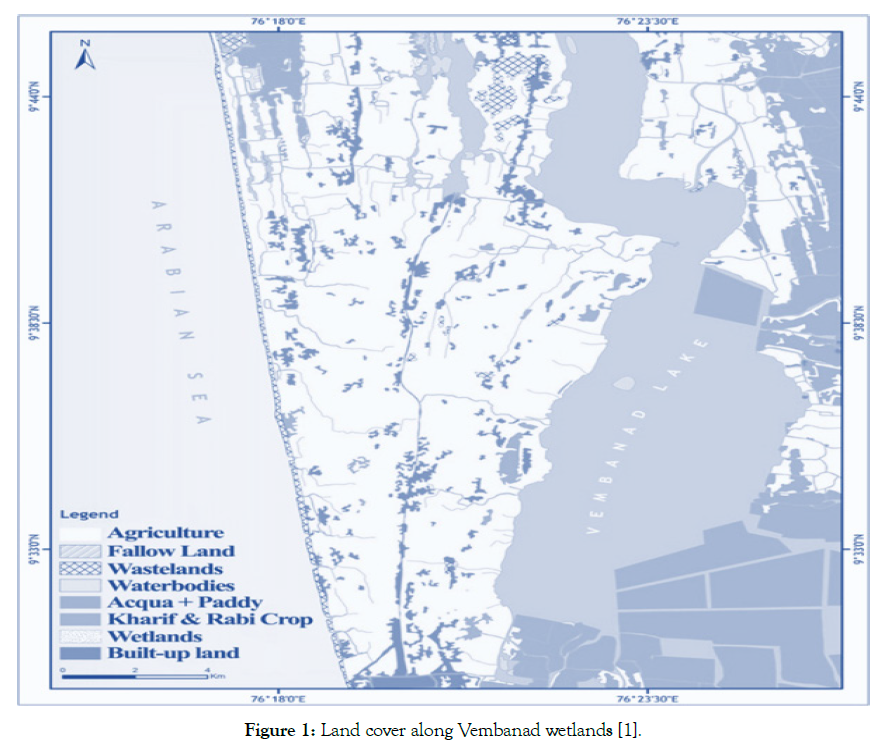
Figure 1: Land cover along Vembanad wetlands [1].
Materials and Methods
Design and construction details of a typical gill net of multifilament and monofilament netting materials are given in Figures 2a and 2b and Figures 3a and 3b respectively and the technical specifications in Figure 4. The main netting is made of monofilament twine of size 0.16 mm or 0.20 mm is widely used. In the case of multifilament gill nets twine size 210 × 1 × 2 and 210 × 1 × 3 are used [4-6]. Half mesh to two mesh depth selvedge made of 210 × 2 × 3 having a mesh size larger than the main webbing is provided both in the upper side (head rope) and lower side (foot rope) of the net. The upper selvedge is hung by reeving whereas the lower selvedge is stapled to the sinker line using PA 210 × 2 × 3 or 210 × 4 × 3 twine. The main webbing and the selvedge are laced together with a take up ratio of 2:1. Mesh size currently used in monofilament are 24, 26, 28, 30, 32, 34, 36, 38, 40, 44, 48 and 52 mm and in multifilament same mesh sizes except 40 mm and above are used (Table 1). Gill nets with mesh size ranging from 24-36 mm are generally used to harvest P. indicus and are locally known as naran vala whereas larger mesh size of 36 mm onwards are used to harvest P. monodon and are locally known as Kara vala. It has been observed that the large meshed gill nets are exclusively made of monofilament. The hanging coefficient provided has been 0.5 and has never exceeded 0.53. Cylindrical PVC floats of diameter ranging from 50-60 mm and thickness ranging from 10-20 mm are used. The sinkers have been of granite stone or spindle shaped lead each weighing approximately 25 to 100 g which is used in the foot rope (Table 1). The present study indicated that gill nets are widely used in large traditional farms of Kerala. The gill nets operated in the aquaculture farms are similar in design to those used in the backwaters of Kerala.
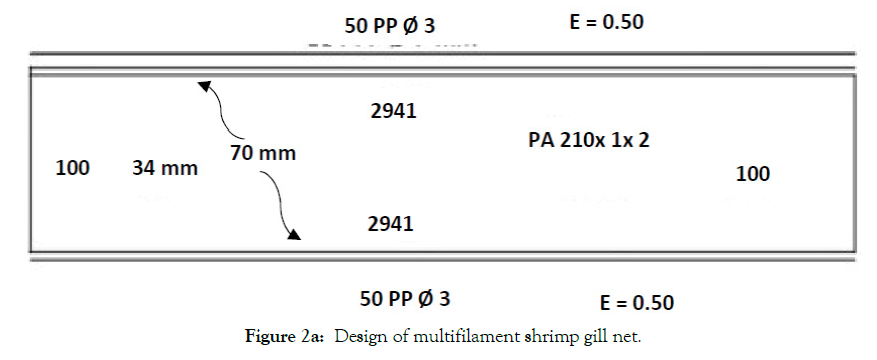
Figure 2a: Design of multifilament shrimp gill net.
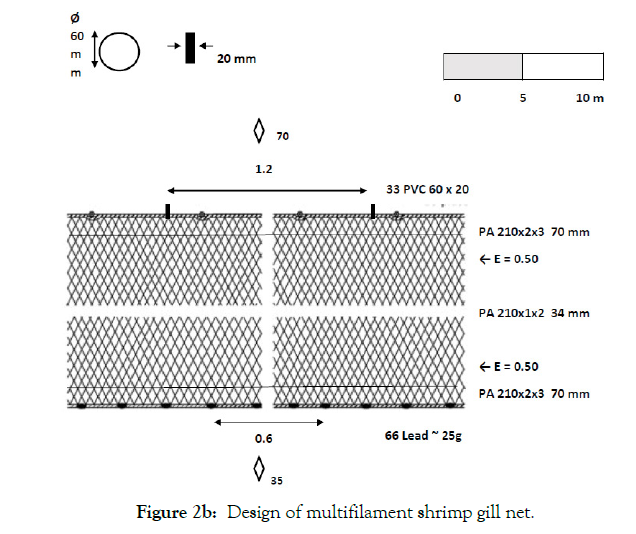
Figure 2b: Design of multifilament shrimp gill net.

Figure 3a: Design of monofilament shrimp gill net.
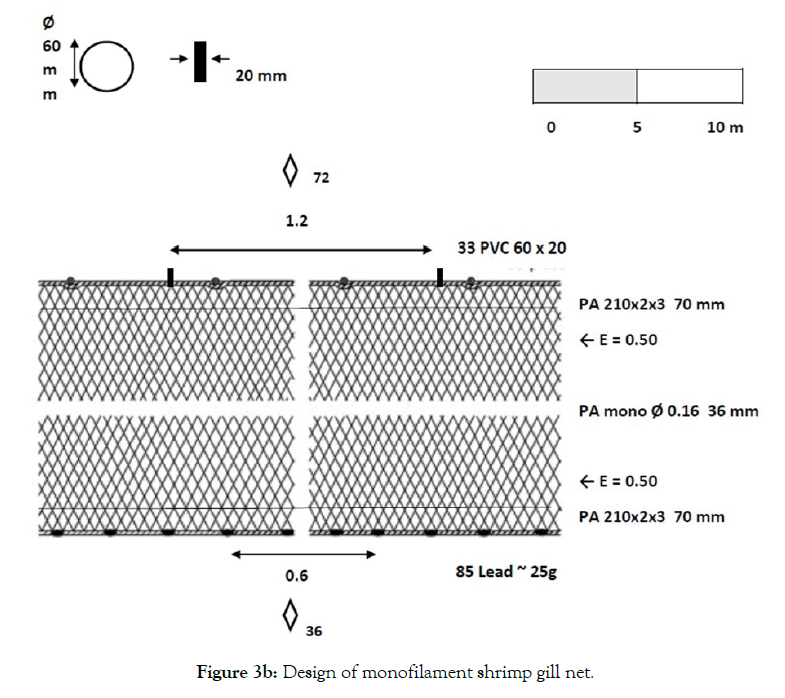
Figure 3b: Design of monofilament shrimp gill net.
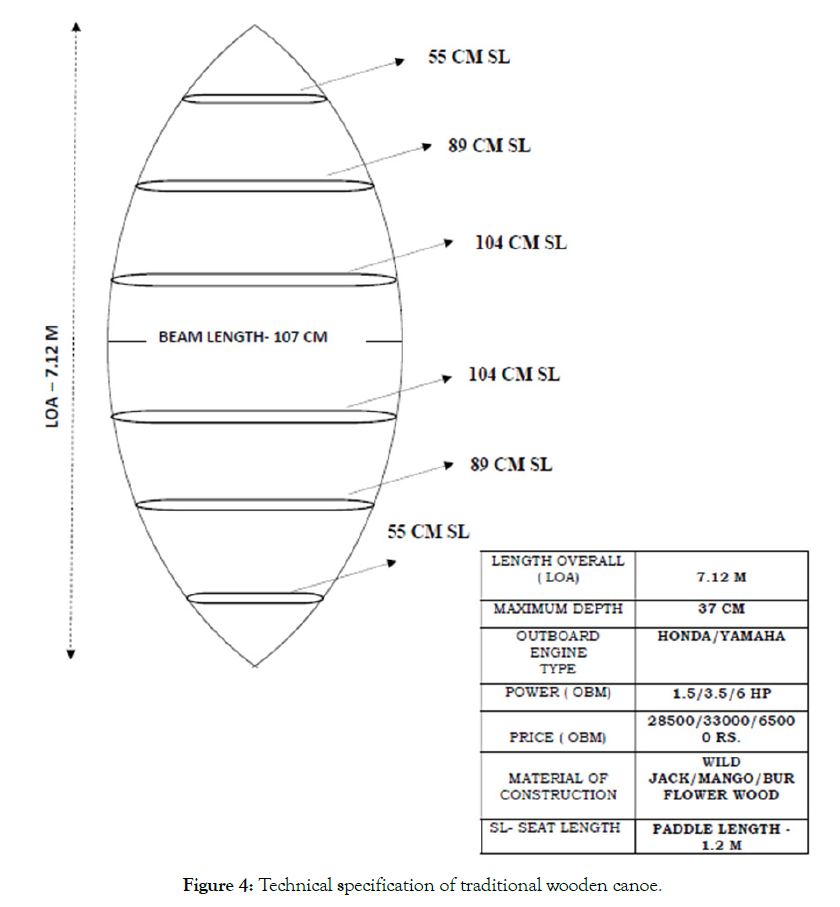
Figure 4: Technical specification of traditional wooden canoe.
| Main webbing | PA multifilament | PA monofilament |
|---|---|---|
| Mesh size (mm) | 34-55 | 28 - 34 |
| Twine type | PA monofilament | PA multifilament |
| Twine specifications | 0.16 -0.20ø | 210 × 1 × 2 - 21 × 1 × 3 |
| No of meshes in depth | 50-60 | 100 |
| Hanging coefficient (E) | 0.5 | 0.5-0.53 |
| No of meshes in length/unit | 1500-2000 | 2000-3000 |
| Hung length (m) | 25-55 | 28-50 |
| Hung depth (m) | 2-3 | 2-3 |
| Ropes | ||
| Material | Polypropylene | Polypropylene |
| Head rope diameter (mm) | 4-6 | 4-6 |
| Foot rope diameter (mm) | 4-8 | 4-8 |
| Selvedge | ||
| Mesh size (mm) | 70-100 | 60-70 |
| Twine type | PA multifilament | PA multifilament |
| Twine specifications | 210 × 4 × 3 | 210 × 2 × 3 |
| No of meshes in depth | 0.5-1 | 2 |
| Floats and sinkers | ||
| Float material | PVC | PVC |
| Floats per unit (No.) | 30-40 | 40-50 |
| Float size (mm) | 60 × 20 | 50 × 10 |
| Sinker material | Lead | Lead |
| Sinkers per unit (No.) | 60-80 | 60-80 |
| Sinker weight (g) | 25 | 25 |
Table 1: Technical specifications of shrimp gill nets.
Results and Discussion
During the study, Gill net showed significant relation with the species encountered in it. There are mainly two types of nets viz. large size nets having a mesh size of 40 to 65 mm which used to catch Etroplus suratensis, Mugil cephalus Linnaeus, 1758, Lutjanus argentimaculatus (Forsskål, 1775), Oreochromis niloticus (Linnaeus, 1758), Horabagrus brachysoma (Günther 1864), Epinephelus diacanthus (Valenciennes 1828), Carangoides malabaricus etc. whereas small size net with 24 to 36 mm are mainly used with shrimps including Fenneropenaeus indicus (H. Milne Edwards, 1837), Penaeus monodon (Fabricius 1798), Metapenaeus monoceros (Fabricius 1798), Macrobrachium rosenbergii (De Man 1879) etc. Pseudetroplus maculatus (Bloch 1795), Leiognathus equulus (Forsskål 1775), Eubleekeria splendens (Cuvier, 1829), Secutor insidiator (Bloch 1787), Ambassis ambassis (Lacepède 1802), Horabagrus brachysoma (Günther 1864), Mystus gulio (Hamilton 1822) were the main bycatch (Table 2) [7].
| Order | Family | Species | Common name | Abundance | habitat | Max. Length (cm) | Market price Rs./kg | ||
|---|---|---|---|---|---|---|---|---|---|
| Oct to Jan | Feb to May | June to sept | |||||||
| Perciformes | Pristolepidae | Pristolepis rubripinnis Britz Kumar | leaffish | no | yes | no | F | 13.6 | __ |
| Leiognathidae | Leiognathus dussumeiri (Valencienne ,1835) | dussumier's ponyfish | yes | no | yes | B,M | 14 | 90- 155 | |
| Leiognathus equulus (Forsskal, 1775) | Common ponyfish | yes | yes | yes | F,B,M | 28 | 100-150 | ||
| Eubleekeria splendens (Cuvier, 1829) | Splendid ponyfish | no | yes | no | B,M | 17 | 90-175 | ||
| Photopectoralis bindus (Valenciennes ,1835) | Orangefinned ponyfish | no | yes | no | B,M | 11 | 110- 185 | ||
| Leiognathus brevirostris (Valenciennes, 1835) | shortnose ponyfish | yes | yes | yes | B,M | 13.5 | 70- 200 | ||
| Deveximentum insidiator (Bloch, 1787) | pugnose ponyfish | yes | yes | no | M,B | 10.5 | 135- 220 | ||
| Gazza minuta (Bloch 1795) | Silver Bellies | no | yes | no | M,B | 14 | 200-230 | ||
| Cichlidae | Pseudetroplus maculatus (Bloch,1795) | orange chromide | yes | yes | no | F,B | 9.5 | 100-150 | |
| Etroplus suratensis (Bloch, 1790) | pearl spot | no | no | yes | B | 40 | 400-700 | ||
| Oreochromis mossambicus (Peters, 1852) | Mozambique Tilapia | Rare | F,B | 39 | 150-200 | ||||
| Oreochromis niloticus (Linnaeus, 1758) | Nile Tilapia | Rare | F,B | 60 | 120-200 | ||||
| Ambassidae | Ambassis ambassis (Lacepede, 1802) | Commerson's Glassy | yes | yes | yes | F,B,M | 15 | 40-75 | |
| Parambassis sp. | Glassfish | yes | yes | yes | F,B | 17.5 | 45-80 | ||
| Gerridae | Gerres limbatus Cuvier, 1830 | saddleback silver biddy | yes | yes | yes | B,M | 15 | 50-90 | |
| Carangidae | Caranx ignobilis (Forsskål 1775) | Giant trevally | no | yes | no | B,M | 170 | 180- 600 | |
| Glossogobidae | Glossogobius giuris (Hamilton, 1822) | Tank goby | yes | no | yes | F,B,M | 50 | 150-175 | |
| Lethrinidae | Lethrinus sp. | emperor fish | no | yes | no | B,M | 52 | 140-400 | |
| Lutjanidae | Lutjanus argentimaculatus (Forsskal,1775) | mangrove red snapper | no | yes | yes | F,B,M | 150 | 150-250 | |
| Scatophagidae | Scatophagus argus (Linnaeus, 1766) | Spotted scat | no | yes | yes | F,B,M | 38 | 100-145 | |
| Sillaginidae | Sillago sihama (Forsskål 1775) | Silver sillago | no | yes | no | B,M | 31 | 150-350 | |
| Sciaenidae | Johnius dussumieri (Cuvier 1830) | Sin croaker | no | yes | no | B,M | 40 | 180-340 | |
| Anabantiformes | Anabantidae | Anabas testudineus (Bloch 1792) | climbing perch | yes | no | no | F,B | 25 | 125-235 |
| Channidae | Channa striata (Bloch, 1793) | Striped snakehead | yes | no | yes | F,B | 100 | 345-450 | |
| Channa marulius (Hamilton 1822) | Great snakehead | yes | no | yes | F | 183 | 280-400 | ||
| Channa punctata (Bloch, 1793 | Spotted Snakehead | Rare | F,B | 31 | 325-420 | ||||
| Heteropneustidae | Heteropneustes fossilis (Bloch 1794) | Stinging catfish | no | no | yes | F,B | 31 | 450-600 | |
| Nandidae | Nandus nandus (Hamilton, 1822) | Gangetic Leaffish | Less seen | F,B | 20 | 125-200 | |||
| Clupeiformes | Clupeidae | Thryssa malabarica (Bloch, 1795) | Malabar thryssa | no | no | yes | B,M | 17.5 | 75-110 |
| Stolephorus indicus (Van Hasselt, 1823) | Indian anchovy | no | no | yes | B,M | 15.5 | 200-330 | ||
| Anodontostoma chacunda (Hamilton, 1822) | Chacunda gizzard shad | no | yes | no | F,B,M | 22 | 75-110 | ||
| Nematalosa nasus (Bloch, 1795) | Bloch's gizzard shad | no | yes | no | F,B,M | 25.5 | 90-190 | ||
| Siluriformes | Mystidae | Mystus malabaricus (Jerdon 1849) | Jerdon's Mystus | no | no | yes | F,B | 15 | 80-110 |
| Ariidae | Arius maculatus (Thunberg, 1792) | Spotted sea catfish | no | yes | no | F,B,M | 80 | 95-175 | |
| Siluridae | Ompok malabaricus (Valenciennes, 1840) | Goan catfish | no | yes | no | F | 51 | 135-200 | |
| Bagridae | Horabagrus brachysoma (Günther, 1864) | Günther's catfish | no | yes | yes | F,B | 45 | 50-100 | |
| Beloniformes | Hyporhamphidae | Hyporhamphus xanthopterus (Valenciennes, 1847) | Red-Tipped Half Beak | Rare | F,B,M | 15 | 150-255 | ||
| Hyporhamphus limbatus (Valenciennes 1847) | Congaturi halfbeak | no | yes | yes | F,B,M | 35 | 135-245 | ||
| Belonidae | Xenentodon cancila (Hamilton 1822) | Freshwater garfish | no | yes | yes | F,B | 40 | 150-300 | |
| Mugiliformes | Mugilidae | Mugil cephalus Linnaeus 1758 | Flathead grey mullet | no | yes | no | F,B,M | 100 | 140-450 |
| Liza tade (Forsskål, 1775) | Green back mullet | yes | yes | yes | F,B,M | 70 | 125-400 | ||
| Pleuronectiformes | Cynoglossidae | Cynoglossus macrostomus Norman, 1928 | Malabar tonguesole | yes | yes | no | B,M | 30 | 100-120 |
| soleidae | Brachirus orientalis (Bloch & Schneider, 1801) | Oriental sole | yes | no | yes | F,B,M | 38 | 250-355 | |
| Cypriniformes | Cyprinidae | Dawkinsia filamentosa (Valenciennes, 1844) | Black-spot barb | no | yes | yes | F,B | 18 | Ornamental |
| Gibelion catla (Hamilton 1822) | Catla | no | yes | no | F,B | 182 | |||
| Puntius sarana (Hamilton, 1822) | Olive barb | yes | yes | yes | F,B | 42 | |||
| Puntius mahecola (Valenciennes, 1844) | Mahecola barb | no | yes | yes | F | 8.9 | |||
| Amblypharyngodon melettinus (Valenciennes, 1844) | Attentive Carplet | yes | yes | yes | F | 8 | |||
| Labeo dussumieri (Valenciennes, 1842) | Labeo | no | yes | yes | F | 50 | 250-320 | ||
| Labeo rohita (Hamilton, 1822) | Rohu | Rare | F,B | 200 | 240-280 | ||||
| Puntius amphibius (Valenciennes, 1842) | Scarlet Banded Barb | Less seen | F | 20 | ornamental | ||||
| Venerida | Cyrenidae | Villorita cyprinoides Gray 1825 | Black clam | yes | yes | __ | F,B | __ | 120-190 |
| Elopiformes | Megalopidae | Megalops cyprinoides (Broussonet, 1782) | Indo- pacific tarpon | yes | yes | yes | F,B,M | 150 | 150-280 |
| Anguilliformes | Anguillidae | Anguilla bicolor (McClelland, 1844) | Short-Fin Eel | Rare | F,B,M | 123 | 275-390 | ||
| Cyprinodontiformes | Aplocheilidae | Aplocheilus lineatus (Valenciennes, 1846) | Striped Panchax | Moderately seen | F,B | 10 | ornamental | ||
| Decapoda | Penaeidae | Penaeus indicus Milne- Edwards, 1837 | Indian white prawn | Rare | B | 18.4 | 280-400 | ||
| Penaeus monodon Fabricius, 1798 | Giant tiger prawn | Rare | B | 33.6 | 350-450 | ||||
| Metapenaeus monoceros(Fabricius,1798) | Speckled shrimp | Moderately seen | B | 15 | 250-300 | ||||
| Palaemonidae | Macrobrachium rosenbergii (De Man,1879) | Giant fresh water prawn | Moderately seen | F,B | 34 | 455-700 | |||
| Macrobrachium idella (Hilgendorf, 1898) | Freshwater Prawn | Less seen | F | 33 | 455-700 | ||||
| Portunidae | Scylla serrata (Forsskål, 1775) | Giant Mud Crab | Less seen | B | 28 | 300-750 | |||
Table 2: Finfish and shellfishes diversity with market trend in the Vembanad Lake, Kerala.
Gill nets of mesh size 40 mm mainly caught Mugil cephalus (locally called kanambu vala) had an average weight of 2.5 Kgs. Fishers set the gear in water for 10 minutes and then slowly hauled up. The floaters are placed at an interval of 55 cm usually made of plastic rings. Instead of using lead or aluminium needles as sinkers many of them were used to carry normal electric wire without copper string inside which reduce their cost of purchase. Numerous bycatch species particularly Pseudetroplus maculatus, Glossogobius giuris, Carangoides malabaricus, Arius maculates were addressed on Kanambu vala. Usually these nets are set on water for about 10 to 15 minutes, since longer setting in water can lead to the entangling of large number of Arius maculatus, which fetch lesser price in market. It’s noticed that the separation of this species from the net also was a tedious process, which mostly damage the webbing.
Another type of gill net called ‘Karimeen vala’ Which target Etroplus suratensis had a varying mesh size of 55 mm, 60 mm, 65 mm and with a total weight of 1-1.5 Kgs. These net were found to be having a horizontal length of 13,200 cm. Bycatch composition of this gear were Arius maculates, Lutjanus argentimaculatus, Pseudetroplus maculatus, some of the minor shrimp species etc. and those were mainly entangled in dorsal fin, pelvic fin and gill cover regions [8-11]. It was noticed that the fishers set the net in water at night 6 pm and haul the net at morning 6 am. A well-known gill net locally called as ‘njandu vala’ with a mesh size of 80 mm and weight of 1-2 Kg without floats was operated during high tides of day and night time set in water for about 30-45 minutes to caught Scylla serrate (Forsskål, 1775). Popular mesh of 32 mm monofilament PA material was used to catch Penaeus indicus, Penaeus monodon, Macrobrachium rosenbergii, Metapenaeus monoceros etc. These gears were washed thoroughly with clean water to remove mud and unwanted weeds. Most of them, after cleaning with water in turn dipped the net in dilute potassium permanganate solution or copper sulphate solution or simply in salt solution to get rid of harmful bacteria’s and other faulers. Then these net were dried in shade after proper spread. The durability of these gears ranges between 3.5 months to 2 years which quietly depends on the usage [1].
The research area was endowed with two types of fishing crafts viz. non- mechanized wooden crafts and mechanized wooden crafts [12,13]. Non-mechanized wooden crafts were constructed from large wood logs. These logs are hollowed by scooping the inner portion and their bottom was thicker than the sides. These non-mechanized crafts locally called as ‘vanji’ were constructed with different types of wooden materials including wild jack (locally called Anjili), bur flower tree (locally called as Cheeni), mango tree ( locally called Maavu) and oil nut tree( locally called Punna). For the easy movement across the water body fishers used to carry 1-1.2 m long wooden paddles having wider area at bottom. Mechanized craft as the name it implies they were equipped with outboard engines having varying efficiencies of 1.5/3.5/6 HP which cost 28500/33000/65000 rupees respectively. Outboard engine of Honda and Yamaha companies were mainly dominated in the research area. In both the cases fishing craft with 6 to 7.5 meter overall lengths (LOA), maximum depth of 30 to 40 centimeters were used [1].
Operation of gill net
Gill nets are operated as bottom drift by one or two persons from a wooden canoe of 4-6 m loA. The net is set either close to the shore or in the deeper regions of the pond. Unlike in the sea, the number of units operated per boat is restricted due to limitations in the size of the pond. The size of one unit is about 50 m in length and 2-3 m in depth. Only 4-5 units are operated by each canoe. The net is drifted for about 30 min to an hour. While hauling the net, both the head rope and foot rope are held together and are taken into the boat gradually by one person while the other manaeoeuvers the canoe. Coconut leaves or pieces of webbing are placed inside the canoe to prevent the shrimps from jumping back to the pond. Gill nets are used in the partial as well as final harvesting of the farm usually after dusk and before dawn during 7 days in each phase of the moon, i.e., three days preceding and three days succeeding the full moon or new moon day as the case may be.
Gill nets are passive fishing gear and the fish gets gilled, wedged or entangled. In the case of shrimps, they are enmeshed in the net. Minor modifications to the gill net, loop vala, kandali vala and Kara vala are operated for harvesting the shrimps in the culture farms [14-17]. Chemeen vala are used extensively in the shrimp culture farms. The farmers have shifted from multifilament twine material to monofilament. This trend was also observed in the marine sector. Now a days lots and lots of fish sampling practices under the supervision of NGOs, government and private agencies where going in the vicinity of Vembanad wetlands.
The invasion of the aquatic weeds specifically Eichhornia crassipes (Mart.) Solms, Nelumbo nucifera Gaertn, Azolla pinnata and Nymphaea mexicana Zucc was a significant threat to fishers in the investigation territory. Azolla pinnata and Eichornia crassipes have become spread inside a brief period broad in the water body and is discovered making a danger to other living things. These weed hinder the fishing action by ensnaring inside the cross sections of Gill net. Vembanad Lake is as yet under the inclusion of these weeds. By the examination, it was perceived that the issue can't addressed inside a brief timeframe since it can gravely influence the most extravagant environment of the lake and in turn the related services as it gives [1].
Gill net fishing practice in Vembanad wetlands is mainly undertaken by the fishermen while the fisherwomen were mostly involved in marketing i.e., selling the fish catch. Fisher women also engaged in various fishing activities including hand picking of black clam (Villorita cyprinoides), mussel farming, pearl spot farming with the financial assistance from department of fisheries, kudumbhasree units, society for assistance to fisherwomen (SAF) etc. [18-20].
Conclusion
The recorded data on the technical specifications catch composition, selectivity and operation of the conventional fishing technique for Gill net rehearsed in Vembanad wetlands, Kerala would serve as base line information for the technological modifications the method may go through in the coming years.
Acknowledgement
Author wish to thank the authorities of Kerala University of Fisheries and Ocean Studies, Panangad, 682505 Kerala, India (Especially Mrs. Amrutha R Krishnan) for giving the essential facilities, and their thoughtful support and direction throughout the investigation.
Conflict of Interest
The authors declare that there are no conflicts of interest.
Funding Sources
There is no funding source available.
REFERENCES
- Ajay VS, Krishnan AR. Design Characteristics and Specifications of Cast Net Operated Along the Lower Stretches of Vembanad Wetlands. Fish Aquac J. 2021;S1:002.
- Ajay VS. Ichthyofaunal Diversity in the Varapuzha Wetlands of Vembanad Lake, Kerala, India: Comprehensive Study on the Living Status, Biodiversity Assessment and Fishing Methods. Fish Aquac J. 2021;S1:002.
- Sreekrishna Y, Shenoy L. Fishing gear and craft technology. 2001.
- Kumari LK, Gopinathan VG, Dhawan RM. Aquaculture of pearl spot (Etroplus suratensis) in an estuarine pond: environmental characteristics, primary production, growth and cost-benefit ratio. 1981.
- Asha CV, Suson PS, Retina CI, Nandan SB. Decline in diversity and production of exploited fishery resources in Vembanad wetland system: Strategies for better management and conservation. Open J Mar Sci. 2014;4(04):344.
- Day F. On the fishes of Cochin, on the Malabar coast of India. Part II. Acanthopterygii. In Proceedings of the General Meetings for Scientific Business of the Zoological Society of London. 1865;pp:2-40.
- Emmanuel BE, Chukwu LO, Azeez LO. Cast net design characteristics, catch composition and selectivity in tropical open lagoon. African Journal of Biotechnology. 2008;7(12).
- Mayuri D, Mohite AS, Makarand S. Design, technical aspects and operation of cast net without central line and without pockets of Ratnagiri, Maharashtra. International Journal of Agricultural Engineering. 2016;9(2):150-5.
- Jayaram KC. The freshwater fishes of the Indian region. 1999.
- Menon NN, Balchand AN, Menon NR. Hydrobiology of the Cochin backwater system–A review. Hydrobiologia. 2000;430(1):149-83.
- Sajeev S, Sekar S, Kumar B, Senapathi V, Chung SY, Gopalakrishnan G. Variations of water quality deterioration based on GIS techniques in surface and groundwater resources in and around Vembanad Lake, Kerala, India. Geochemistry. 2020;80(4):125626.
- Paul TT, Panikker P, Sarkar UK, Manoharan S, Kuberan G, Sreenath KR, et al. Assessing vulnerability and adopting alternative climate resilient strategies for livelihood security and sustainable management of aquatic biodiversity of Vembanad lake in India. J Water Clim Change. 2021;12(4):1310-26.
- Sahib SS. Fish diversity in Vembanad Lake, Kerala, India. Journal of Aquatic Sciences. 2017;32(1A):95-100.
- Mogalekar HS, Ansar CP, Raman NN, Jayachandran KV, Dinesh K, Kolhe S. Fish diversity of Vembanad lake in the Panangad-Kumbalam region of Kochi, Kerala, India. Pollution Research. 2015;34(2):345-9.
- Mogalekar HS, Ansar CP, Golandaj A, Dinesh K. Biodiversity of Decapod Crustacean in the Vembanad Lake at Panangad-Kumbalam Region of Kochi, Kerala. Environ Ecol. 2015;33(4B):1920-3.
- Narayanan SP, Thapanjith T, Thomas AP. A study on the icthyofauna of Aymanam Panchayath, in Vembanad wetland, Kerala. Zoos Print J. 2005;20(9):1980-2.
- Nansimole A, Sruthi S, Devi GT, Radhakrishnan T. First report on fishery resources from four estuaries in Trivandrum district, Kerala, India. Int J Scient Res. 2014;3(12):129-31.
- Talwar PK, Jhingran AG. Inland fishes of India and adjacent countries. CRC Press; 1991.
- Remesan MP. Inland fishing gears and methods of North Kerala. Central Institute of Fisheries Technology; 2009.
- Ray T. Indigenous fishing knowledge of Sundarban. Lokaratna. 2013;p:1-1.
Citation: Ajay VS, Amrutha Krishnan R (2021) Design Characteristics and Specifications of Gill Net Operated Along the Lower Stretches of Vembanad Wetlands, Kerala, India. J Aquac Res Development. 12:649.
Copyright: © 2021 Ajay VS, et al. This is an open-access article distributed under the terms of the Creative Commons Attribution License, which permits unrestricted use, distribution, and reproduction in any medium, provided the original author and source are credited.


